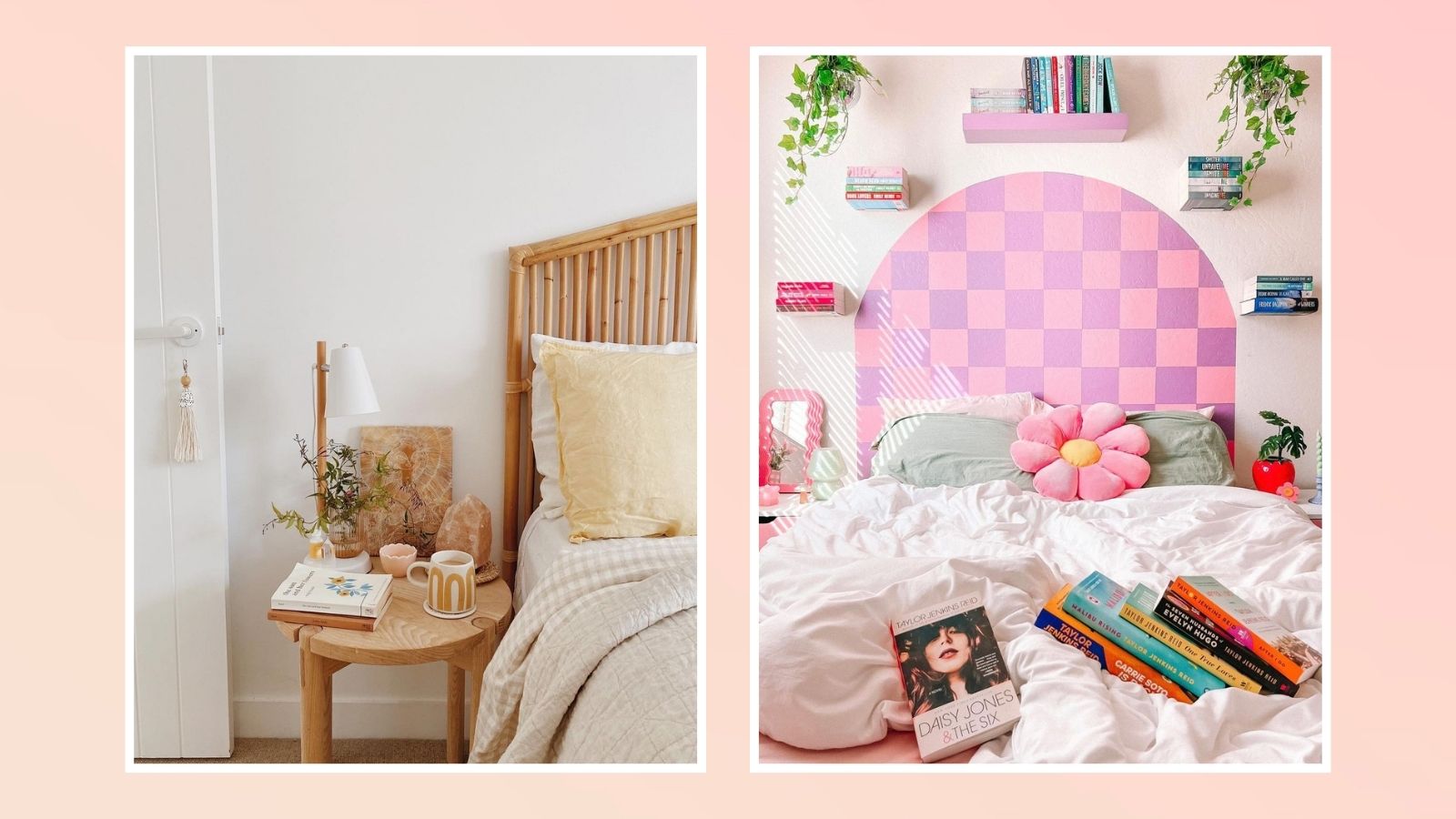

The first step in creating a well-designed bedroom is focusing on where you sleep. You know what they say, you snooze (on figuring out the right bed type for you), you lose. And although knowing how high a bed should be might not seem super important, it can actually be pivotal to how your space feels, and more importantly, how you sleep.
A great mattress is paramount, of course, but it doesn't stop there. From contemporary near-to-the-floor minimalist platform wood beds to more traditional-style bed frames a foot or more off the ground, choosing the best bed height and setup for yourself can be a backbreaker. Literally. Whether you need a taller bed for your height or prefer a platform bed for its non-sagging advantages, exploring the benefits of a variety of different styles can help steer you in the right direction to where you feel refreshed each and every morning.

Know that height isn't everything
Determining your particular needs is the first step in figuring out a sleeping solution for your bedroom. An old rule of thumb states that the mattress should be at knee level, basing the height of your bed on your individual height. However, with the rise of mattress-in-a-box companies and minimalist platform beds, many beds today are much more close to the ground. Whether you should opt for a minimalist bed with a memory foam mattress or a higher bed frame, the solution could come down to one question: should you have a box spring or not?
Think about your mattress preferences
While the debate rages on which type of mattresses provide the best sleep, there are more options for sleepers than ever before. With plenty of styles of spring mattresses, memory foam mattresses, or hybrid versions (mattresses with both spring coils and layers of foam) available to consumers, an initial step in determining your bed height should be determining what type you prefer.
Before purchasing a bed frame, spend time browsing mattress stores where you can determine your preferences including mattress type, height, and softness level. The availability of so many types and brands gives consumers the advantage of finding the right option for their sleep preferences.
Consider any health concerns
The final question to ask yourself when determining the right bed height for you is to consider whether your health depends on the type of bed you have. Many of the studies researched around the height of a bed focus on patients in a hospital but for non-patients, there’s not a lot of medical evidence to come to a strict consensus on whether it's better to have a bed close to the ground or up in the air. However those with health concerns or back problems should consult their medical doctor to help determine the right bed style and mattress for them.

Box springs give more motion
Sleep expert and founder of TheSleepDoctor.com, Dr. Michael Breus, admits there are advantages to having a box spring, some of which might even improve your love life. “Advantages of a box spring include more motion and movement on the bed, which can be helpful for sexual activity or just the ability to get up and out of the bed.”
Another advantage might depend on your body type or age. “For larger people, box springs can add more comfort, and for elderly, they are often high in height from the floor which makes it easier to get up and down,” Breus says.
Beds With Box Springs Aren’t Always The Answer
For those affected by noises during their sleep, the box spring can be the very thing keeping you awake at night. “Box springs can be noisy,” Breus notes. An alternative, such as a memory foam mattress, produces almost no sound and could even potentially dampen the sound (although the mattress materials won’t totally soundproof your space). Another disadvantage to box springs, according to Dr. Breus is the fact that they tend to wear out and break.
Join our newsletter
Get small space home decor ideas, celeb inspiration, DIY tips and more, straight to your inbox!

Hello! I’m Kate Santos, a writer and photographer based in Los Angeles. In the design world, I got my start working as an Editorial Intern for Dwell magazine in San Francisco. Since then, I’ve written about design and architecture in many national magazines and online publications, including Playboy, Hunker, and The Culture Trip.
I grew up in a very old house in North Carolina and am still influenced by the rustic, charming, antique and aged elements of a home. Sustainability and longevity is extremely important to me and I believe learning to reuse materials or purchasing items you’ll love forever goes a long way. I also lean towards the Japanese philosophy of wabi-sabi when designing my own home, embracing the perfectly imperfect items I can find.
-
 Shoppers approve of this Wayfair cooling mattress on sale now for less than $270
Shoppers approve of this Wayfair cooling mattress on sale now for less than $270See the Wayfair cooling mattress with over 18k reviews and 4.6 stars for summer sleeping. Plus, more cooling sleep essentials on sale now
By Emily Lambe Published
-

 Turmerry Latex Mattress Topper review: a perforated pick for the perfect night's sleep
Turmerry Latex Mattress Topper review: a perforated pick for the perfect night's sleepContributing editor, Paige Cerulli tests the Turmerry Latex Mattress Topper in her midwestern home
By Paige Cerulli Published
-
 6 best cooling mattress toppers and pads to buy — from $89.99
6 best cooling mattress toppers and pads to buy — from $89.99Half a dozen of the best cooling mattress toppers and pads to buy if you are a hot sleeper, or live in a warm climate. Including Surbtex and Tempur Pedic options
By Christina Chrysostomou Last updated
-

 The TEMPUR-Adapt mattress topper is a dreamy combo of cushion and support
The TEMPUR-Adapt mattress topper is a dreamy combo of cushion and supportOur contributing editor reviews the TEMPUR-Adapt mattress topper for two weeks in her home
By Paige Cerulli Published
-
 What is the happiest color for a small bedroom? Here's what experts recommend for a dopamine boost
What is the happiest color for a small bedroom? Here's what experts recommend for a dopamine boostWhat is the happiest color for a small bedroom? Paint experts from Benjamin Moore and Sherwin-Williams spill
By Danielle Valente Published
-
 Helix Midnight Mattress: As a front sleeper, I declare it the comfiest base I've ever slept on
Helix Midnight Mattress: As a front sleeper, I declare it the comfiest base I've ever slept onSee our Helix Midnight mattress review to see if this hybrid design is right for you. We tested it out for over one month to find all the pros and cons.
By Emily Lambe Published
-
 How to make a small bedroom cozy — designers reveal their non-negotiable rules
How to make a small bedroom cozy — designers reveal their non-negotiable rulesOur edit of how to make a small bedroom cozy features designer-backed tips and items to help achieve the look
By Danielle Valente Published
-

 Zinus ultra cool gel mattress topper review
Zinus ultra cool gel mattress topper reviewOur freelance contributor Camryn Rabideau shares her thoughts on the Zinus Ultra Cool Gel Memory Foam Mattress Topper after four weeks of sleeping on this temperature-reducing bedding accessory.
By Camryn Rabideau Published